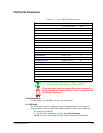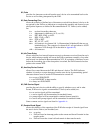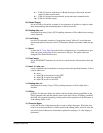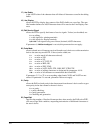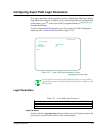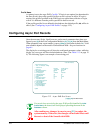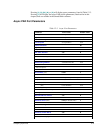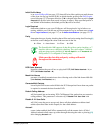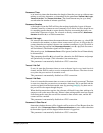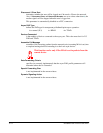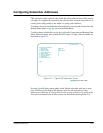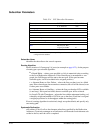
Configuring Async Ports 12-11
Initial Profile Name
is an async PAD profile (see page 12-2) that will be in effect on this port until the user
of the async device logs into the PAD, at which time the profile in the PAD Logins
record (see page 12-7) becomes effective. (If
N
is selected in the Port record for
Login
Required
, the profile in the Port record is always in effect.) If the specified profile is
not defined in the database, the default profile,
90
, will be in effect.
Login Required
determines whether or not async PAD users will be required to log in before con-
necting with this port. If
Y
, the user will be prompted to log in, and must enter a
Login
ID
and
Login Password
(see page 12-7) or an
Abbreviated Address
(see page 12-17).
Parity
determines the type of parity checking that will be used on incoming data. Pressing
[K]
at the Port screen changes the value to the next one in the list:
0
= None
1
= Auto-detect
2
= Even
3
= Odd
The SmartSwitch 1800 supports 8 data bits with no parity checking, or 7
data bits with even or odd parity checking. They also support 7 data bits
with auto-detect parity checking if
X.3 Line Speed
is set to
Autobaud
and
PAD profile 21 is configured to check parity.
Make sure the data bits and parity settings will match
throughout the connection.
DCE Cable Attached
identifies whether the port will act as a physical DCE (
DCE Cable Attached
=
Y
) or
DTE (
DCE Cable Attached
=
N
).
Mask Link Alarms
prevents (if enabled) transmission to the collecting node of the link alarms 400-406
(
Link Enabled, Link Disabled
, et c.)
Generate M-bit Packets
is used by the PAD to turn on the M-bit in the X.25 data packet if more than one packet
is required to transmit the data from the PAD.
Default Calling Address
will be inserted into an incoming X.29 Call Request if the packet does not contain a
calling address. This parameter is relevant only if
Disable X.121 User Calls
is
N
.
Disable X.121 User Calls
will (if
Y
) cause the port to accept only those calls that substitute an abbreviated
address (described later in this chapter) for the called address.
Autocall
causes (when enabled) the PAD to automatically call the remote device (Called
Address) when the link comes up, either through rebooting the node or pressing
[F7]
after changing
Autocall
to
Y
.



